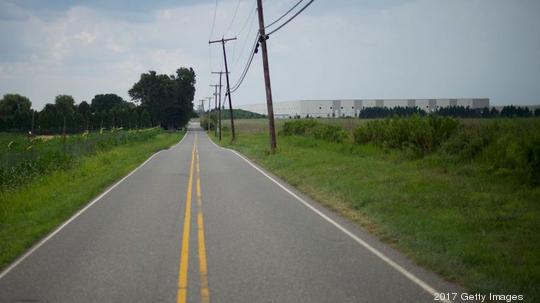
If you look closely at Pitchbook’s annual report, you might notice something unusual about the most active investors in the Midwest/Great Lakes regions (Pitchbook has split the broader Midwest into a few smaller regions). Whereas the West Coast’s most active investors are all financially-focused, private investors, the Midwest contains many government-backed direct investment organizations. I’ve listed off the major public investors here for easy reference:
| Organization | State / City Focus | # of Deals |
| Elevate Ventures | Indiana | 35 |
| Innovation Works | Pittsburgh | 32 |
| Rev1 Ventures | Central Ohio | 31 |
| Invest Michigan | Michigan | 18 |
| JumpStart | Northeast Ohio | 11 |
| Invest Nebraska | Nebraska | 10 |
| CincyTech | Southwest Ohio | 10 |
In prior years, we’ve seen the Wisconsin Economic Development Corporation (focused on Wisconsin) and InvestDetroit (focused on Detroit, MI) make the most active investor lists as well.
Now, while this may seem normal to those native to the Midwest’s tech ecosystem, this is highly unusual on a national level. In highly competitive ecosystems like the West Coast and New England, there is no room for government organizations to get involved---they are out-bid by a healthy, robust community of accelerators, pre-seed, seed and Series A private investors. These investors are solely focused on a financial return and place few constraints on geographic or economic development metrics. This begs the question---if the global startup hubs of Silicon Valley, NYC and Boston don’t have local or state government involvement in the early-stage financing of their startups, why do we? And is it helpful or harmful to our ecosystem’s growth?
Gaps in our capital ecosystem
State governments didn’t just create these programs out of the blue; they were responding to temporarily fill a market inefficiency. Risk capital can be slow to react to demand---we have lazy investors with a supermajority of all global VC dollars who are refusing to invest outside a 1-hour radius of their home in Palo Alto. The market is slowest to react to this inefficiency when it comes to earlier-stage small financing rounds---transaction costs are not much less than for larger rounds, so it takes even more convincing to get VCs to fly all the way to Omaha, Detroit or Indianapolis for a <$1 million check. This is starting to change---slowly but surely---and some Midwest ecosystems like Chicago and Minneapolis attract enough local and national capital that their local governments don’t provide direct-investing programs (but may still subsidize with angel tax credits and state-focused fund-of-funds).
Conflicting goals
The difficulty is that these programs can be a double-edged sword. While providing much-needed capital to compelling founders when they need it most, they are laced with restrictions. Many organizations can’t lead a round and often need at least as much matching private capital, limiting their speed and independence. Most have tight geographic restrictions on where they can invest and require companies to stay in a location long after the capital is used up. They sometimes have unique reporting requirements---such as jobs created, average salaries and other economic impact metrics---that betray their ultimate priorities. Most of the time the goals of the company and the goals of the government are aligned, but sometimes they aren’t and cause difficulties. For example, if a founder believes she needs to hire remote developers overseas or move their headquarters to another state, that could be at odds with the government-backed investor who may or may not be sitting on their board.
Shifting tactics with maturity
In the end, these programs should be temporary. Either we will discover there was no real market inefficiency to fill and the costs to maintain them will override the public’s desire to continue funding them, or---more likely---the private market will catch up. In the meantime, the programs will evolve to fill gaps. Many states offer angel tax credits to encourage more conservative high-net-worth individuals to get involved in backing tech startups. Other states offer a fund-of-funds to kickstart VC formation away from the coasts, helping to alleviate transaction cost barriers and ideally start a cycle of successful VC firms. The initiatives can also span to other VC market efficiencies, such as the minority-focused startup tax credit that Minneapolis tested.
Overall, I’m of the opinion that the benefits outweigh the risks. A lot of rising startups across the Midwest wouldn’t be where they are today without public capital. From our experiences, these government-backed groups cooperate and co-invest well with private partners like us and generally perform strong due diligence, make good investment decisions and support their founders as well as anyone. Ultimately it is a sign of a still-developing ecosystem. When the time is right, we will want to rethink these initiatives as competitive private capital fills those shoes.
One thing is for certain - when it comes to new venture formation and growth, it is better for us to have these programs than not. Pitchbooks league tables illustrate the other side of the coin---regional ecosystems more nascent than the Midwest, where both private and public funding sources are virtually non-existent. So for now, I think it’s a worthy use of my tax dollars … or at least better than many other government spending initiatives!
Victor Gutwein is the founder and managing director of M25, a Midwest-focused VC firm targeting early-stage tech companies. Over the past few years, Victor has invested in over 50 startups in 10 Midwest states. Here, Victor writes every month to share his thoughts from his travels and experiences working with founders, VCs and others in the region.








